Both the Apple App Store and the Google Play store are available today in more than 150 countries worldwide and support dozens of languages. As of Feb 2020, the App Store is available in more countries than Google Play (155 to 152), while Google Play supports more languages (close to 80 compared to Apple’s 40).
When the platforms support such vast global reach, your goal as an app developer should be to take advantage of this exposure, aspiring to reach your app’s full distribution potential. What is the way to do this? App localization and culturalization. In this guide, we will map out the best ways to focus on iOS localization and android app localization.
The Common Sense Advisory surveyed 2,430 web consumers in eight countries to learn how language affected their purchasing behaviors. Here are their findings:
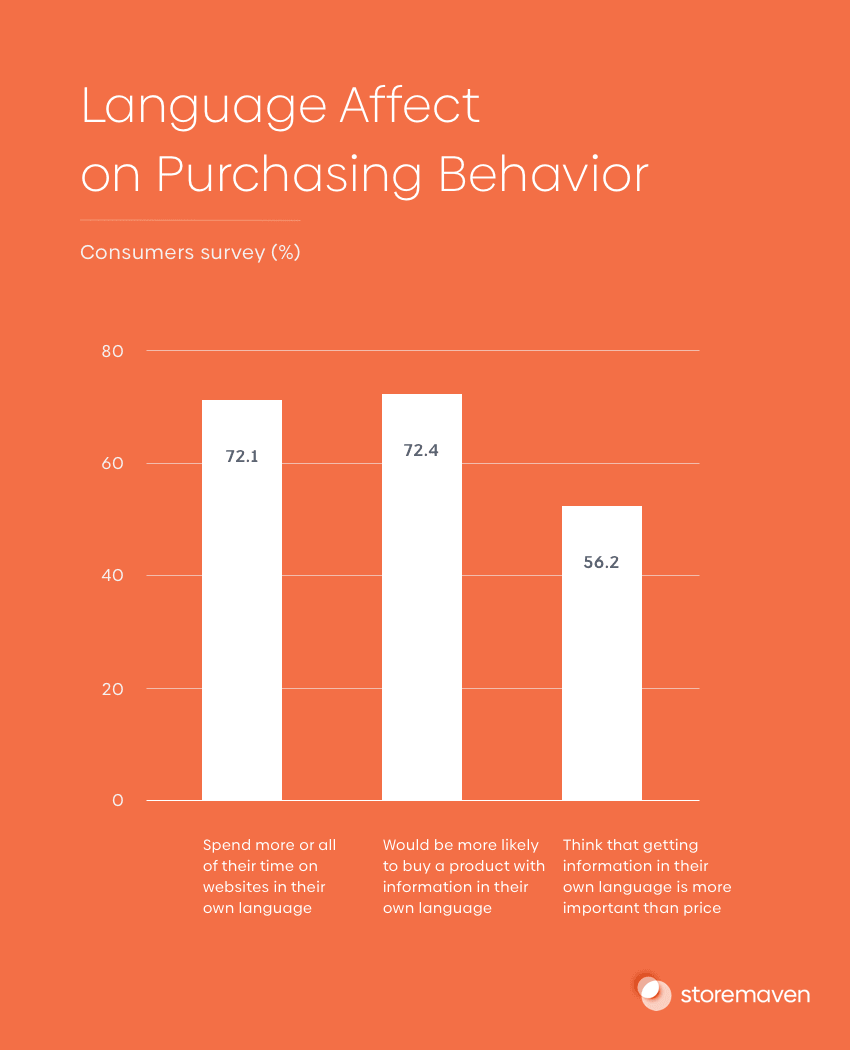
Our data, collected from more than 500 million users, shows that, among the world’s top gaming apps, the conversion rate (CVR) lift gained from localizing app store pages reached up to 26%.
The impact of localization on app discovery can be massive. This case study by TheTool tells the story of a car app in Switzerland, AutoScout24, that serves as a marketplace for used cars. Struggling to find the balance between four spoken languages, and doing massive app store keyword research, the mobile app localization efforts proved successful—increasing app visibility by 74% and downloads by 38%.
After analyzing our data, we crafted a guide that will enable you to increase global visibility and boost conversion rates. Let this article escort you through the streets of these two tricky tactics.
App Localization Definition
What is app localization?
App localization is the process of adapting your app to different countries and their languages and cultures. This is done by changing the page’s metadata (i.e., app name, description, keywords, and screenshots) to reflect the preferences of international audiences.
App Localization can go several levels deep, as this example from Google Maps shows. Notice how they used the same exact messaging, features, and design for U.S., France, and Japan, but in different languages and with different models and cities.
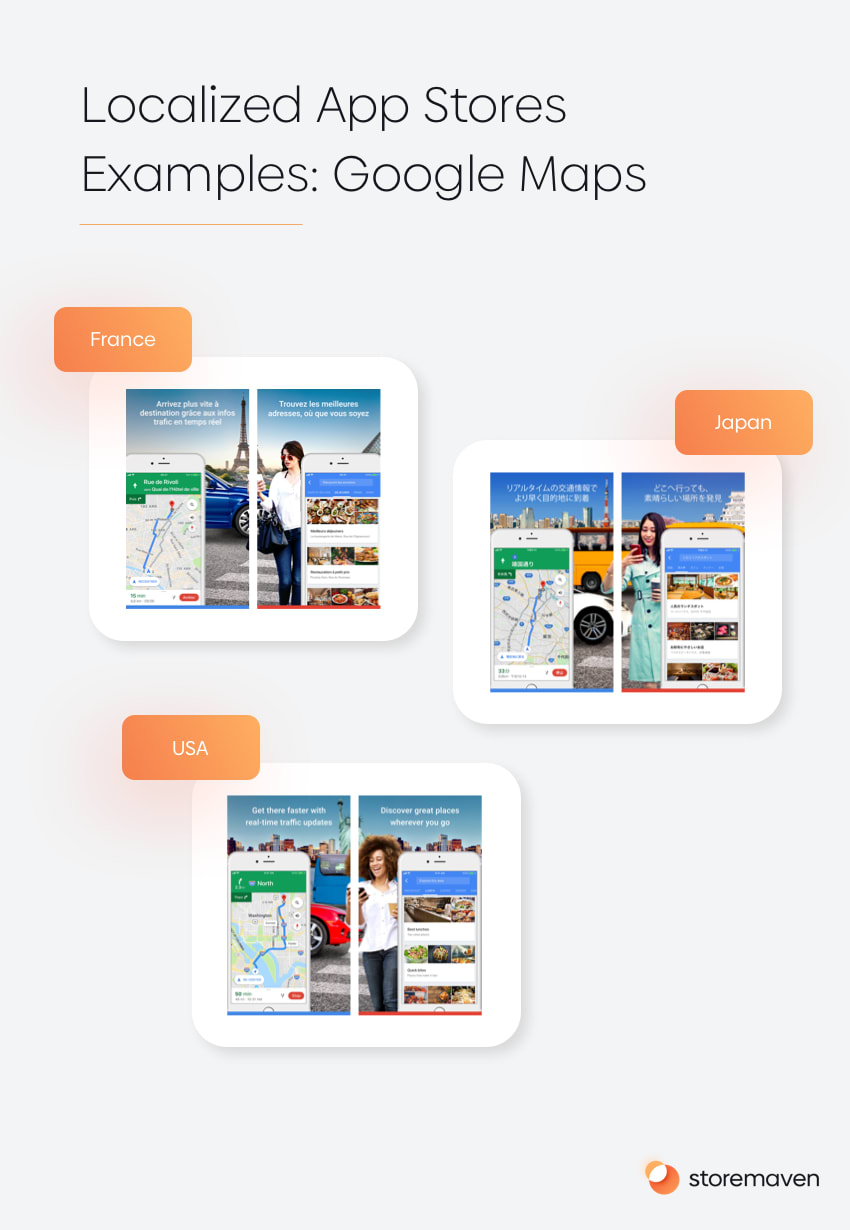
Three Levels of App Localization
We like to break localizing your app into three different levels. Each level goes deeper than the previous.
Level I of App Localization: Translate
This is the easiest level of app store localization and what many call “minimum viable localization” (MVL). Level I app localization means the translation of the description, captions, and keywords into the market you want to pursue.
There are many things to consider here. For example: should you translate your app title? Well, it depends—usually, you won’t translate your app title in order to strengthen your brand, but you can (and probably should) add a localized element right up there near the title to enhance engagement.
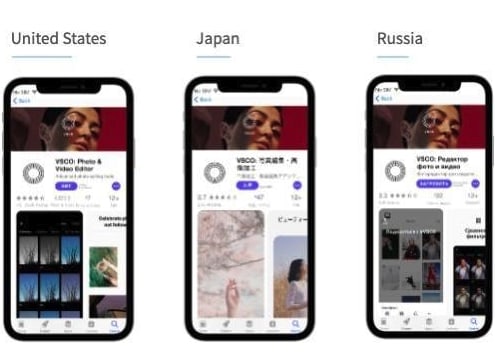
The issue with this level of localization is the sunken cost already put in. With just a bit more investment into getting it right, you can reap significant rewards in the form of a higher conversion rate and better growth—some localization is better than none.
How do I know which language I should translate my app store page to?
Great question. Sure, you have some idea about what market to go to after the tier ones, but there are some things to consider:
1. The size of a potential language group—Spanish could very well be a better option than Hebrew. But, also consider the market size—Japan, for example, is a very important market for game developers – even if it’s not one of the most spoken languages.
2. The language demographic of your users—Look behind you and try to exploit that market. There are many opportunities with users you’ve already attracted but haven’t localized for yet.
3. The competition to your app or game in a certain market—Check your app’s biggest rivals to look for the best market to penetrate.
Level II of App Localization: From Localization to Culturalization
This level is actually called app culturalization, and here we are starting to touch on some real marketing expertise. It takes more work, but, given that many of the competitors out there aren’t doing that work, app culturalization creates an opportunity for marketers who are willing to take that step, resulting in some great return on investment (ROI).
In the example below, you can see localized app store pages for the U.S. and Japan. Rather than a simple translation, these pages are completely different.
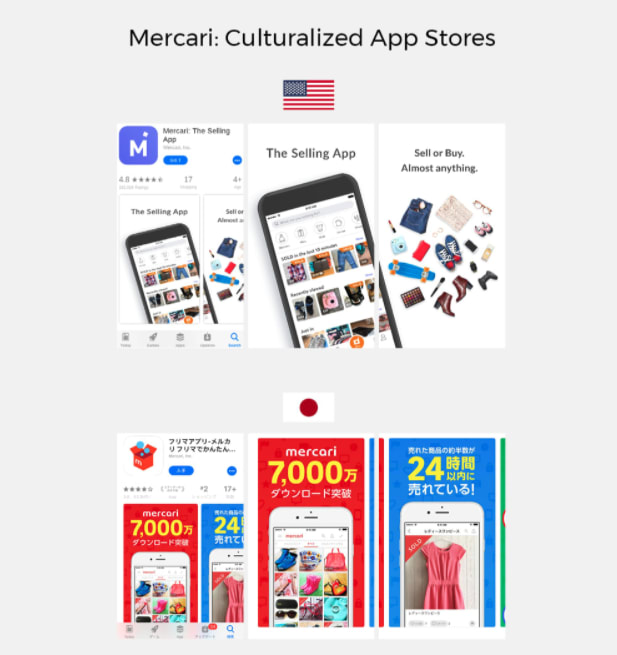
Simply put, app culturalization is the process of creating a custom app store page for a different locale/language based on that region’s unique values and beliefs. This phase requires in-depth research into the local audience and the way users in certain countries engage with your app.
For example, you might find out that in a certain country, users avail of a certain feature more than in another country, which can help you come up with ideas to showcase these areas of the app in the localized version.
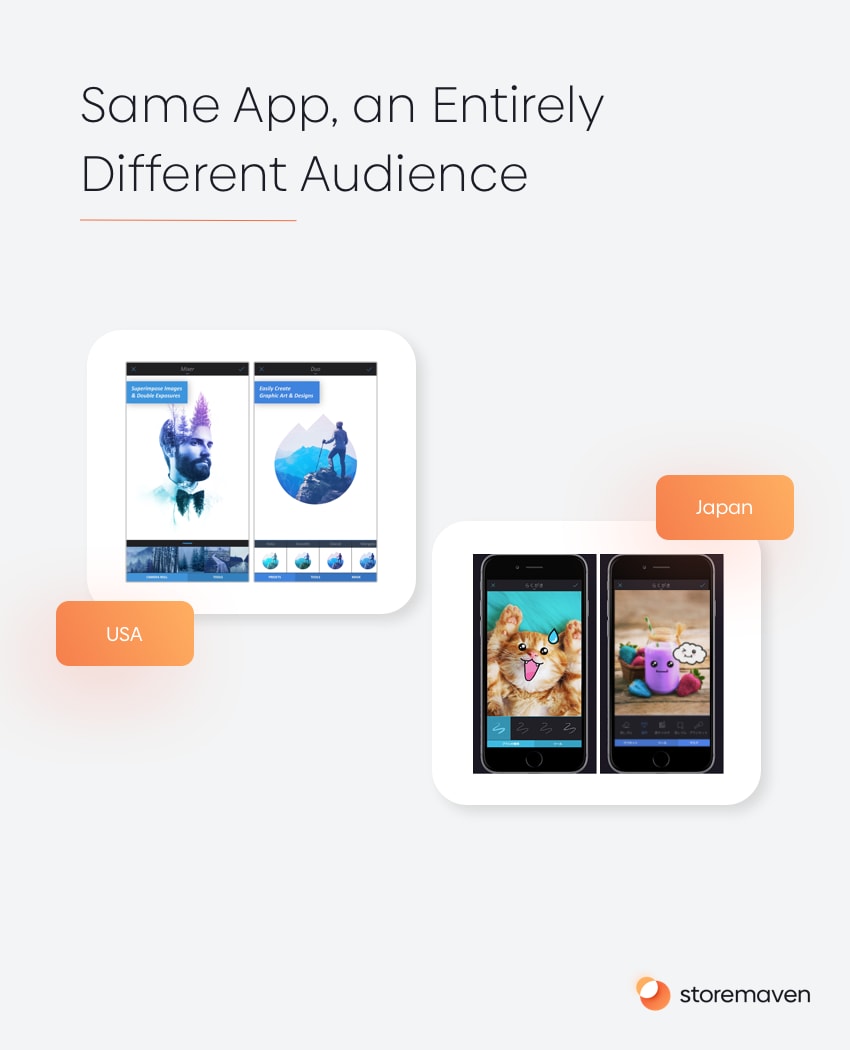
While app localization allows app store users to find your app, culturalization offers users a chance to connect to your app on a more meaningful level. More importantly, culturalization ensures that visitors to your app will not be turned off by a piece of content that is considered dissonant or even offensive in their culture. By researching the local audience well, you will find the best ways to present your app’s value to each specific audience.
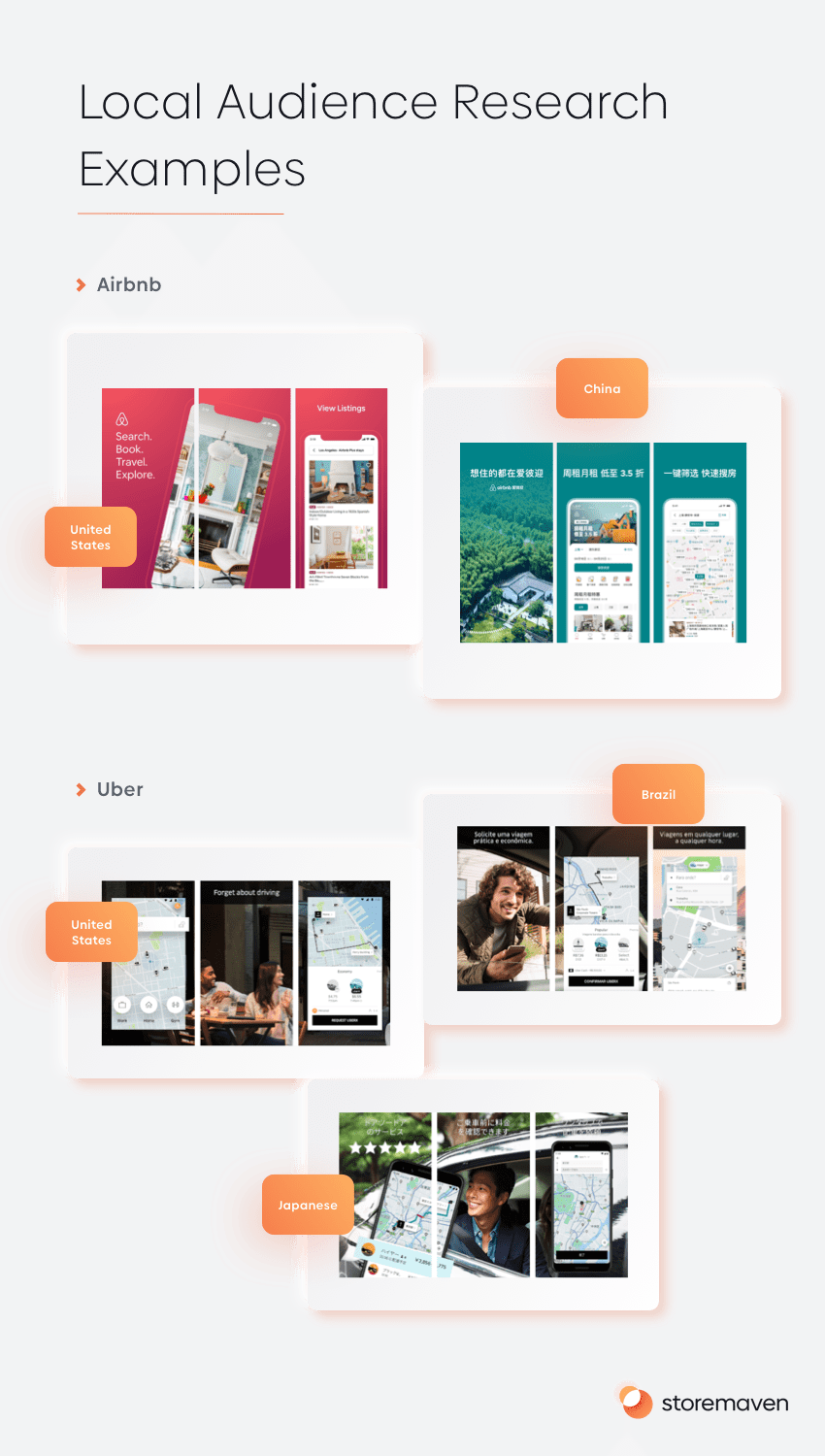
This is also the phase where many things can go wrong, and so understanding the nuances and subtleties of each country and culture is crucial. The main advice we can give here is something that’s probably best to embrace in many other aspects: when in doubt, leave it out. This is not where assumptions and guesses will work.
The second piece of advice: like a tourist in a foreign country, you can get by with a simple Google search, but the best way to see each country in its glory is by using a local tour guide. Instead of guessing whether a certain image, gesture, or word is effective and not offensive in the market, you are pursuing, look for a local advisor or agency to avoid mistakes that will require your PR department to step in.
Level III of App Localization: Hard Core Culturalization
Although level II is a big leap forward, it doesn’t stop there. In level III, we are actually localizing the app itself, or parts of it, and using those localized features in the app store creative assets – this is the definition of culturalization.
In the vast majority of the tests we have run that included both a translated app variation and a culturalized app variation, the culturalized variation won. This goes to show that there is an even higher CVR potential for culturalizing apps.
Effective App Localization Tips
Here are some tips to localize your app:
- Research languages & locales to localize for: Use services like App Annie, Sensor Tower, and Mobile Action to track your competitors’ localization efforts. Identify locales where there is a good market opportunity—both in terms of audience and revenue potential.
- Use local translation services: Solicit translation services, ideally from translators that are from the locale in question and with copywriting experience. Make sure the underlying message you are trying to convey is adapted to local usage and jargon to avoid linguistic friction. Literal translations can be problematic as idioms and jargon often get lost in translation.
- Cross-check your translations: If you have the resources, it’s best to cross-check your translations with other local translators and even with local people. For example, you can send your translations through Fiverr to be proofread by a local person and ask for added cultural points to ensure that your copy is locally appropriate.
- Test your localized content: Not all localized content works, which is why it’s important to test all localized metadata. For example, based on tests we ran, we saw many examples where a localized app title lost while other localized asset won. This proves that while understanding messaging is important, in certain countries, English can give validity to a brand.
Proven App Localization & Culturalization Framework
Here is an outline of proven app localization process step by step:
Step 1: Determine in which countries you should localize your app
There’s no single answer here. It depends on the nature of your app and your category. Obviously, there’s no need to translate your app into Portuguese if you are not shipping your products to Portuguese speaking countries, and so on.
Bear in mind that English is one of the high priority languages to translate into, and if your app doesn’t support English, it should definitely be high on your list.
Other things to consider are country relevancy, app popularity in different markets, where your competitors are operating, and, of course, your budget.
Step 2: Do local research and develop hypotheses
This involves gaining an understanding of your competitive landscape in the localization tested, user preferences, and industry background. Based on this research, you can now develop hypotheses to test—remember that the “deeper” the hypothesis the better. You should also always strive to come up with results that you can act upon. Knowing that American users react better to a green icon and Japanese users prefer a red one is a nice conclusion but it doesn’t aspire to the next step. But in-app metrics indicating that Japanese users are more likely to use the “share to” feature, for instance, can lead to a meaningful strategy.
Step 3: Design an App Localization strategy
Based on the hypothesis you came up with, create the design brief. Think about how this hypothesis is reflected in your assets and start designing different variations. Getting advice from a local designer can only improve your assets and minimize mistakes.
Step 4: Test your localized assets
Test localized creative assets before they actually go live in the app store to truly evaluate which work in different countries. This will enable you to make smart, data-driven decisions about your app store creative assets and drive your app’s growth.
Step 5: Analyze your results
This is a never-ending cycle, which requires a lot of brainpower—constantly coming up with new hypotheses and working based on insights driven from these tests. But in order to attract new users, bring back lapsed ones, and stay ahead of the competition, this five-step process is a must that will, with time, become easier to execute.
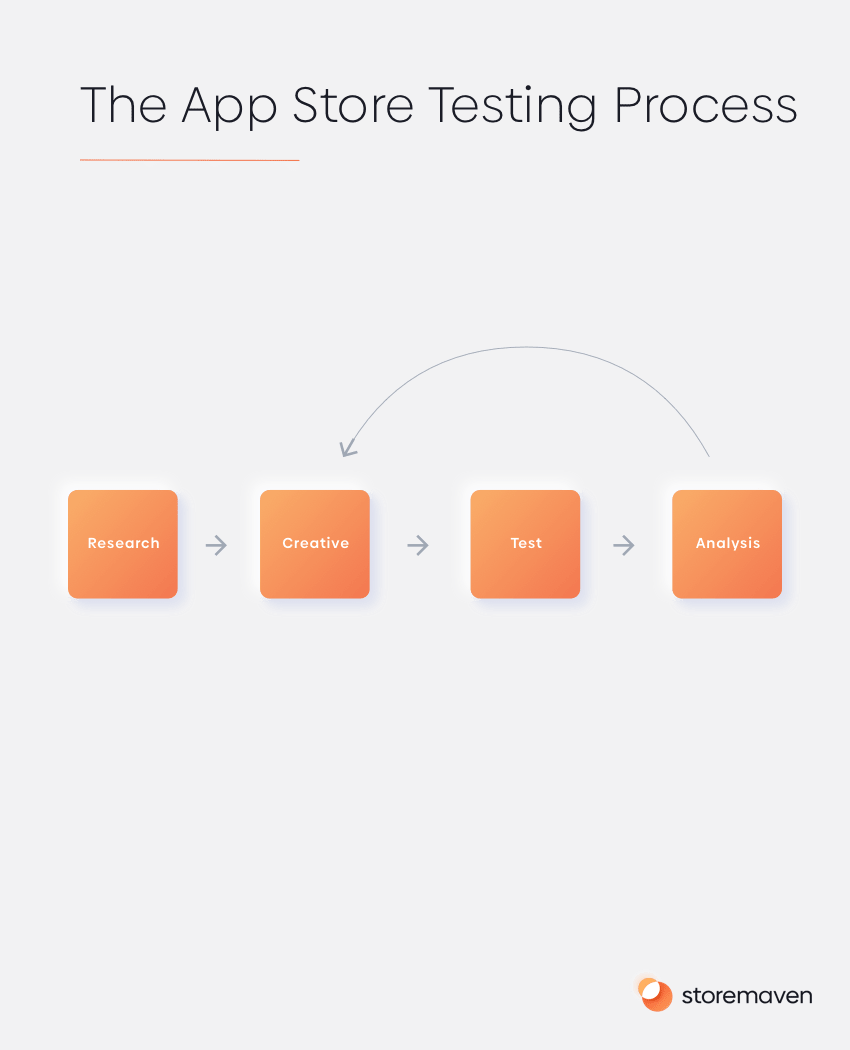
Examples of Great App Localization & Culturalization Strategies
Audible is enjoying the power of the people. Having different teams in many countries allows this successful audio entertainment app by Amazon to be right on top of local changes and trends, giving their audience different experiences in different stores.
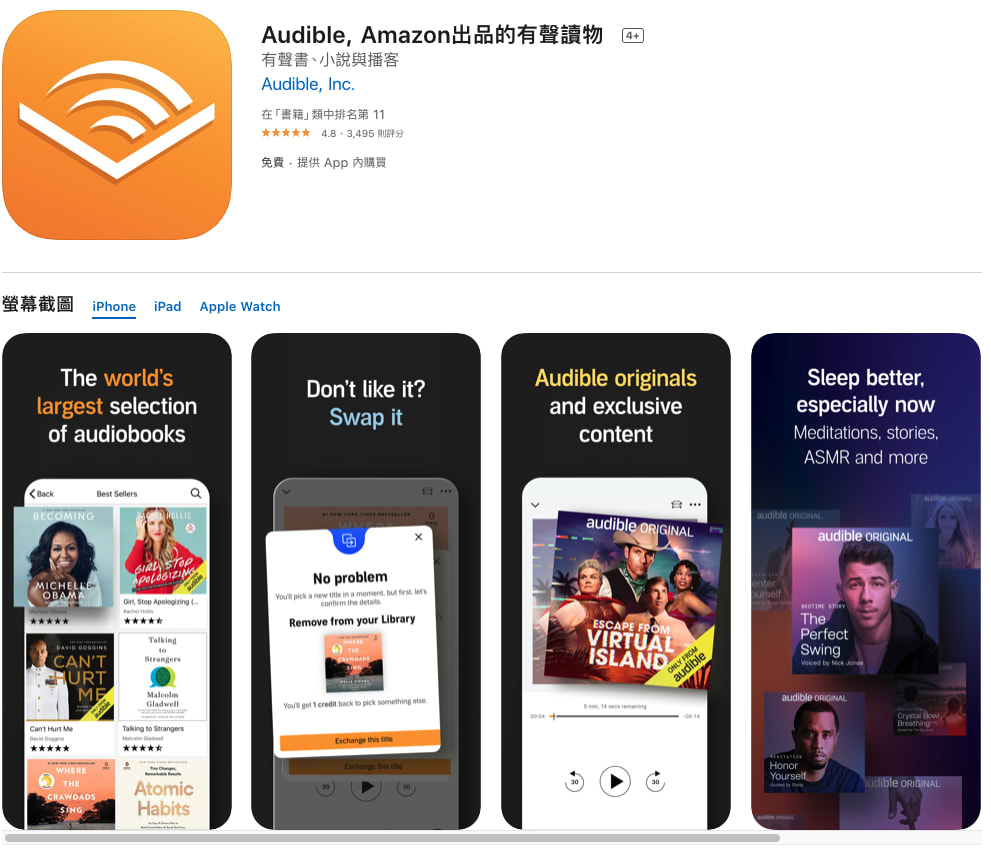
Social Point is constantly testing different messages in the markets it pursues. For example, regarding their game Dragon City, the French audience reacted better to an actual gameplay screenshot, as opposed to the U.S. where a more traditional screenshot, with text, was the winning version.
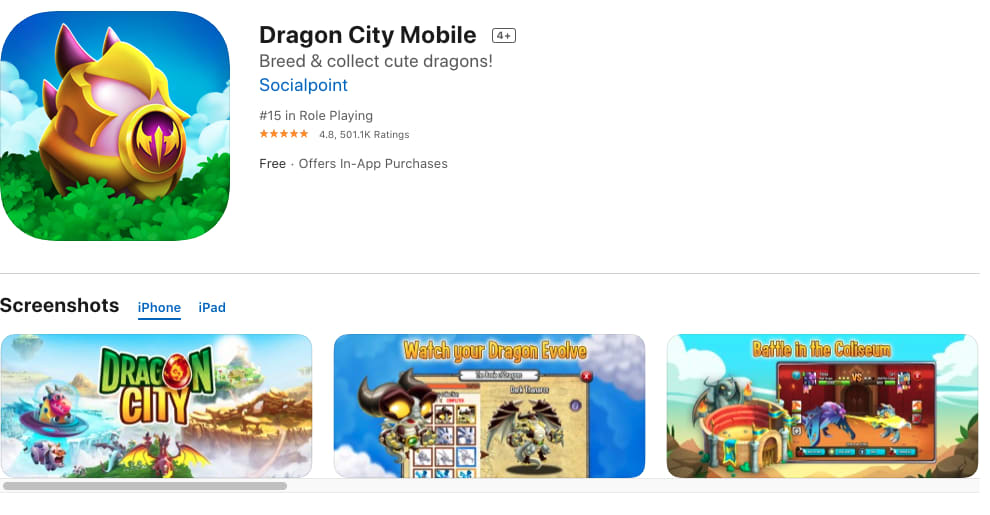
VSCO, the photography app, was able to use data in its favor. It noticed that the overall level of photography was more sophisticated in Sweden than in other markets, as in-app engagement metrics reflected that more professional-level tools were more frequently used when editing images. The company showcased photography that matched the sophistication of the local market in Sweden and messaging that focused on the more advanced features of the app. To find out more about the ways VSCO is mastering app localization, read this article.
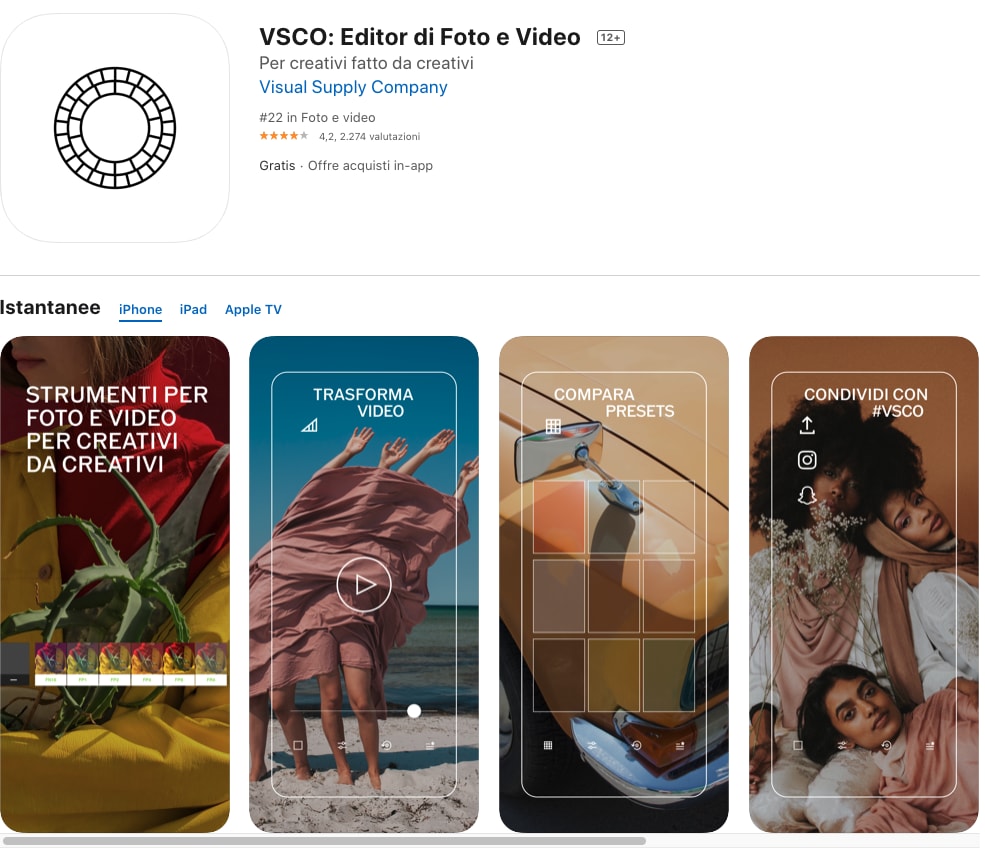
How Does App Localization Work in the App Stores?
App Store localization is slightly different than Google Play Store localization. In this section, we will discuss ASO localization for both app stores.
iOS Localization in the App Store
Your first step when localizing your app in the App Store is to understand your language and region settings. Just follow these steps carefully.
Next, you’ll need to go through three different stages for iOS localization: internationalizing your app, localizing it, and testing it.
When internationalizing your app, you’ll have to separate language and locale differences from the rest of your user interface and code. During the localize stage, you’ll export and import the localizations using the file formats. For more on this process, check Apple’s developer pages.
Android App Localization in Google Play
The same process can be used for Google Play store localization, and planning is again essential. This checklist on the Android developer page will lead you through the key aspects of Android app localization to get your app ready.
Summary
App localization and culturalization is one important step toward becoming an ASO guru. From analyzing more than 500M users at top brands, the potential conversion rate lift of localizing your app store page is between 5.1% to 24.6%.
This is a simple method to follow which requires quite an investment in the research phase, but promises a second-to-none experience for your users: an app they’ll remember and engage with. Ignoring this stage can leave you with an unfulfilled promise, and, equally as important, leave a lot of money on the table for your competitors to easily grab.
















